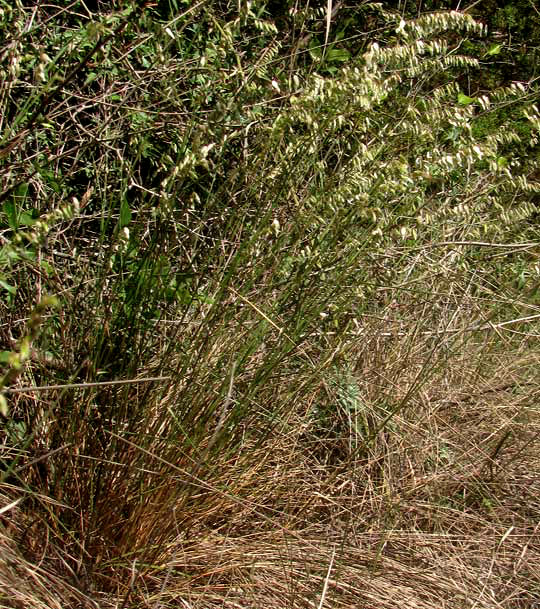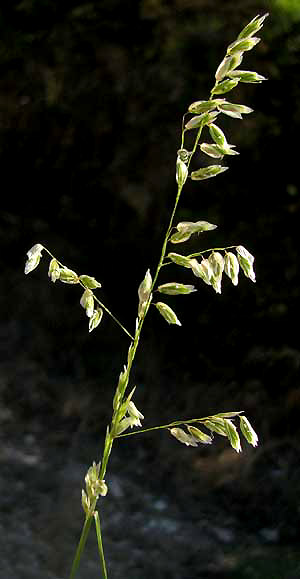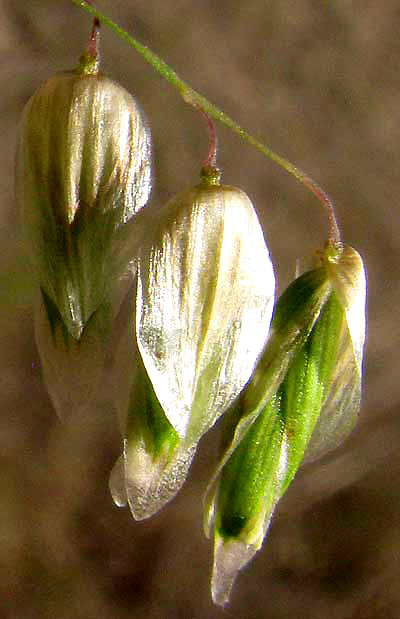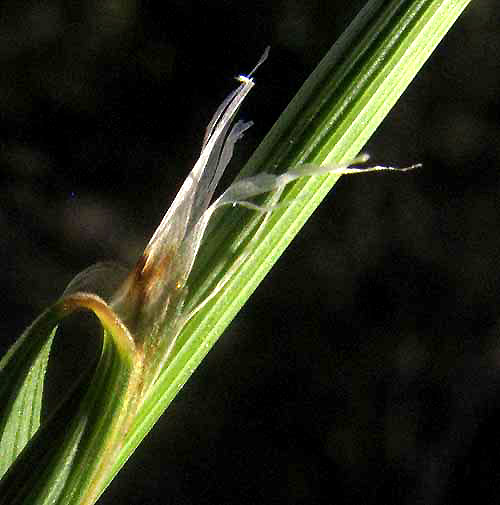Excerpts from Jim Conrad's
Naturalist Newsletter
from the May 11, 2014 Newsletter issued from the Frio Canyon Nature Education Center in the valley of the Dry Frio River in northern Uvalde County, southwestern Texas, on the southern border of the Edwards Plateau; elevation ~1750m (~5750 ft); N29.62°, W99.86°; USA
THREE-FLOWERED MELIC GRASS
In the upper Dry Frio River Valley about three miles north of Juniper House, you find more prairie plant than farther south, or "down below." That makes sense because the Edwards Plateau -- with us residing on its southern rim -- often is regarded as the southernmost extension of the Great Plains physiographic province, which originally was occupied mainly with prairie glassland.
One grass species found just two or three miles north of us, but which I haven't noted yet around Juniper House and farther south and lower in elevation is the perennial bunchgrass standing about a yard high (1m) shown below:

This grass draws your attention with its pale, fair-sized spikelets quaking in the wind as they dangle top-down on short stems from the main branches of the flower part, the inflorescence. You can see a typical inflorescence with its dangling spikelets below:

Up close, the spikelets display unusual and distinctive features, as you can see below:

Mainly, notice the glumes, which are two scales arising opposite one another at the bottom of most grass spikelets; in our picture the spikelets are hanging downward, so the glumes arise at the spikelets' tops. This grass's glumes are much larger, paler, papery and more loosely fitting that those of typical grasses. In the above picture, glumes on the spikelet at the right are open, showing three florets inside them. The green parts covering each floret are scale-like "lemmas," and in this species the lemmas also are very unusual, in that their tops (pointing downward in the picture) also look like thin, white paper.
Whenever you have a grass that's new to you, it's good to pay attention to the "ligule" that may or may not form where the grass blade meets the stem. This grass's membranous ligule tends to split at its top, as is shown below:

This grass, so typical looking at a distance but very distinctive up close, is MELICA NITENS, often identified in books as the Three-flowered Melic, "melic" being a general term for species in the genus Melica. Three-flowered Melic mostly occurs in the central US, in a band from Illinois to here in southwestern Texas, plus a bit in arid northeastern Mexico. About 80 species of Melica are known from north-temperate parts of the world, South America and southern Africa.
Three-flowered Melic likes partial shade, so often you see it at the base of trees. Since it tolerates shade, forms such large, dense tufts, and in general is a graceful-looking being, it deserves to be planted around homes, especially those trying to conserve water.